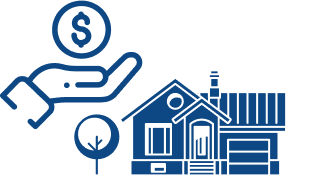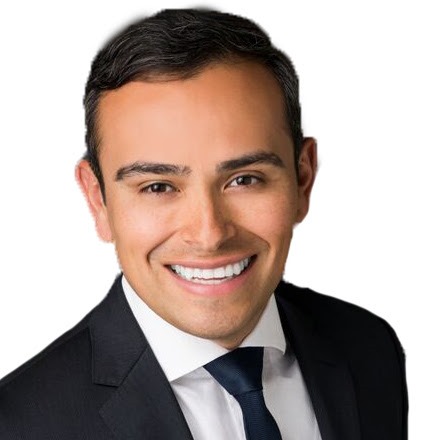What Are Adjustable-Rate Mortgages? – Explaining the 3-, 5-, 7-, and 10-Year Arm
October 2nd, 2023 / Author: Cesar GomezIt is not easy to choose the right mortgage when you are thinking of buying a house. This single decision could determine your financial future for the decades to come. Thus, you need to think carefully. Is a 30-year fixed-rate mortgage the best? Or is a 10-year ARM preferable for your specific situation?
Each situation is unique, so we can’t say what you should do. However, we can explain how adjustable-rate mortgages work and exemplify their pros and cons so that you can make an informed decision. This is precisely what this article will do, so let’s get to it.
What Are Adjustable Rate Mortgages?
Adjustable-rate mortgages are one of the two primary types of mortgages, the other being fixed-term mortgages. An ARM is a loan that has a variable interest rate – i.e. an interest rate that changes over the life of the loan based on a specific ARM index.
The initial interest rate of an ARM is fixed for a set amount of time and afterward changes periodically. Other names for ARMs are variable-rate mortgages and floating mortgages. There are many types of ARM loans, so we’ll use one of the most common ones as an example – the 10-year arm.
What Is a 10-Year ARM Mortgage?
The 10-year ARM is a loan with a fixed interest rate for 10 years, and after the 10 years expires, the interest rate on the outstanding balance floats. An ARM loan is most often defined by two numbers, e.g. 10/1 ARM. The first number represents for how many years the interest is fixed, while the second one, called the adjustment frequency, denotes how often the interest rate is adjusted.
So, if you took out a 10/1 ARM loan, you would have a fixed interest rate for 10 years and after that, the interest rate is adjusted yearly.
Common ARMS
Once you understand how to read ARMs, the name itself tells you most of what you need to know. Some of the most common ones are:
- 3/1 ARM
- 5/1 ARM
- 7/1 ARM
- 10/1 ARM
How Much Is Your Interest Rate with an ARM?
ARM index + ARM margin = fully indexed rate (how much you pay)
The ARM Margin
The ARM margin is determined by your lender and stays fixed through the life of the loan. If you have a good credit score, you can probably negotiate a low margin. Conversely, people with a low credit score will often get a high margin, as their loan is considered riskier for the lender. A typical ARM margin is between 2 – 3%.
What Is the ARM Index?
The ARM index is the variable part of the ARM and the index that is used is determined by your lender. The index rate changes based on market factors. Some of the most common indexes used are the prime rate, London Interbank Offered Rate (LIBOR), Secured Overnight Financing Rate (SOFR; SOFR has started replacing LIBOR since 2020), and T-Bill.
The Adjustable-Rate Mortgage Cap
Another key component of ARMs is the cap – the limit to which your interest rate can rise. Typically, the percentage of the interest rate is capped, but the cap can also apply to the principal and interest in dollars. The cap is represented by three numbers.

Let’s say you get an ARM loan with a 2-2-6 cap. The first number is the cap on the interest rate for the first adjustment period after the fixed-rate period expires, the second one is for later increases, while the third number refers to the lifetime cap. It is easier when you see an example:
You get a 10/1 ARM with a 3% fixed interest rate and with a 2-2-6 cap. For the first 10 years, you are paying the 3% interest rate. The fixed-rate period expires and the mortgage rates rise by 3%. Because your loan has a 2% cap on the initial adjustment period, your interest rates can only rise by 2%, so now it is 5%.
The next year, the same happens, but because the periodic adjustment rate cape is also 2%, your interest rate is now 7%. Finally, mortgage rates rise by 3% again the following year, but because the lifetime cap on your ARM is 6%, your final interest rate is 9%. Thus, after 13 years, you are paying 9% interest on your 10 year ARM and it can never go above that number.
What Are the Advantages and Disadvantages of ARMs?
When buying a house, people typically prefer a fixed-rate mortgage, because it provides stability and because the interest rates won’t change over time. However, there are specific situations where an adjustable-rate mortgage loan is preferable.
ARMs are usually cheaper in the initial loan period than a fixed-rate mortgage. So, the interest rates for a 10 year ARM will be lower for the first ten years than for a 30-year fixed mortgage. This also means you can qualify for a larger loan at the onset. The interest rates after the initial loan period expires may also continue to be low if the general mortgage rates are low, but this is not something you should ever count on.
On the other hand, the interest rates, and consequently how much you pay, may rise significantly after the initial loan period. This is something your borrow counts on, which is why they are giving you such low initial rates. It’s your call if you want to bet against the banks expecting that mortgage rates won’t go up, but it’s definitely not recommended.
That’s not to say that an ARM loan is never a good choice, you just need to know what you are getting. A 3-, 5-, 7-, or 10-year ARM could be a good choice if you intend to sell your house after the fixed-rate period is over. Similarly, an ARM may be a good option in case you are reasonably sure that you can refinance your mortgage for more favorable rates after the fixed-term period.
However, don’t forget that properly navigating an adjustable-rate mortgage is more complex when compared to fixed-rate mortgages. In short, the advantages and disadvantages of ARMs are:
Pros
- Lower rates in the initial fixed-rate term
- Easier to qualify for larger mortgages
- You will have lower interest rates if future mortgage rates go down
Cons
- Interest rates will likely rise substantially during the life of the loan
- Complex to navigate
What Are the Requirements for an ARM Loan?
The requirements for ARM loans are similar to other types of loans. You need to consider your credit score, the loan amount, and the down payment. The loan amount is limited by your lender and the area you live in, while your credit score allows you to negotiate better rates.
The down payment is also similar to other types of loans – typically you need to put down 20% of the home’s price to avoid paying for private mortgage insurance. If PMI is not an issue, ARM loans often require as little as a 5% down payment to qualify.
Is the Fixed-Rate Period on Your 10-Year Arm Expiring?
If your fixed-rate period is expiring and you are afraid of what the rising interest rates will do to your budget, contact SleeveUp Homes. We will buy your house for top dollar and pay in cash. You don’t need to pay for repairs, hold open houses, or prepare your house in any way – we buy as-is.
Request a no-obligation cash offer and see how much you can get for your house, no strings attached. We guarantee you can pay off your loan, have enough for the down payment on a new house, and have money left over. On top of that, you can close in 7 days, if speed is of the essence.
SELL
YOUR HOUSE
If you want to sell fast and are worried about how long the traditional process takes, and the commission and fees involved, consider working with SleeveUp Homes.





 view all blogs by this author
view all blogs by this author Zachariah Peterson (69 blogs)
Zachariah Peterson (69 blogs)